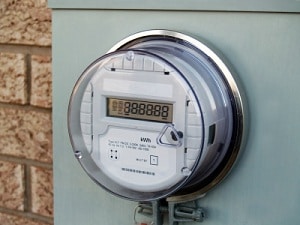The Facts About Smart Meter Safety

Electric utilities around the country are upgrading their aging electric grids with technology that’s designed to make electric service more reliable and more affordable for customers in the utilities’ service territories. But while many have expressed concerns about the long-term effects of smart meters, there isn’t a lot of evidence to indicate they pose a health threat.
As part of the ongoing nationwide electric grid upgrades, many utilities are replacing old electric meters with smart meters. Advanced smart meters allow for the transmission of data to utilities, such as how much electricity is being consumed, and allow the utilities to transmit back to the meters. This gives utilities the ability to quickly and conveniently perform tasks like turning on the power after a customer moves in at a residence. Additionally, smart meters mean that utilities don’t have to pay for things like meter readers, cost savings the utilities say they can pass on to customers.
Regardless of the purported benefits of smart meters, some are pushing back against the installation of the meters, citing the supposed health risks of radiofrequency (RF) energy that is emitted by all electronic devices, including wireless devices like smart meters. Electric customers and advocacy groups opposed to smart meters have said that the devices are inherently dangerous to customers’ health. They cite supposed health risks associated with all RF-emitting devices, such as cancer, and describe symptoms that some customers have reportedly said resulted from the installation of smart meters, such as headaches, heart palpitations, and sleep disturbances.
However, utility officials, smart meter manufacturers, and proponents of the technology point out that people are exposed daily to RF energy, including low levels of naturally-occurring RF energy produced by the earth and the human body, as well as RF energy from common man-made electronic devices like cell phones and microwave ovens. Smart meter supporters also claim that everyday electronic devices typically produce far higher levels of RF energy during long periods of exposure than smart meters. In short, they say smart meters are safer than other electronic devices that most people use every day.
So which is it? Are smart meters dangerous or are they safe? While the real question may concern the safety of wireless electronic devices in general, here are several facts about smart meter safety.
Smart Meters Are Tightly Regulated by the Federal Government
The Federal Communications Commission (FCC), as required by the National Environmental Policy Act of 1969, evaluates the effects of RF emissions from electronic devices and regulates the amount of RF energy that electronic devices ‘ including cell phones, microwaves and smart meters’ are allowed to emit. Over the years, the FCC has taken recommendations from organizations such as the American National Standards Institute (ANSI), the Institute of Electrical and Electronics Engineers Inc. (IEEE), and the National Council on Radiation Protection and Management (NCRP) regarding human exposure to RF energy.
Like all other communication devices, smart meters, and the amount of RF energy they are allowed to emit, are tightly regulated by the FCC.
Smart Meters Produce Very Low Levels of RF Energy
The amount of RF energy emitted by an electronic device is defined by its power density, which is measured in watts per square meter (W/m²) over a certain distance. According to the Public Utility Commission of Texas, smart meters produce far lower levels of RF energy than many other common household electronic devices, like 16 times less RF energy than a baby monitor and over 4,300 times less than a typical cell phone:
| Device | Power Density | Typical Exposure Duration |
|---|---|---|
| Bluetooth USB Dongle | 0.042 W/m² at 4 inches | Less than 1 minute |
| Baby Monitor | 0.029 W/m² at 3 feet | 8 hours |
| Cordless Phone Base | 0.052 W/m² at 3 feet | 1’30 minutes |
| Microwave Oven | 0.0043 W/m² at 3 feet | 10’60 minutes |
| Smart Meter | 0.0018 W/m² at 10 feet | 1’2 seconds |
Smart Meters Do Not Continuously Emit RF Energy
Smart meters do not continuously produce a wireless signal or emit RF energy. Instead, they relay information back to a utility once every 15 minutes throughout the day. The actual signal only takes from one to two seconds to send and, according to a study by the Electric Power Research Institute, generates less than 1 percent of the FCC’s daily safe RF energy exposure limit.
FCC: No Scientific Evidence Connects RF Energy With Illnesses
According to the FCC, some health and safety interest groups have interpreted certain reports to suggest that wireless device use may be linked to cancer and other illnesses. However, currently, no scientific evidence establishes a causal link between wireless device use and cancer or other illnesses.
Sources
Smart Meter Opponents Look to Legislation and Regulation, San AnselmoFairfax Patch, Nov. 1, 2011.
Study: Smart Meter Radio Frequency Emissions Low, CNET, Feb. 22, 2011.
Federal Communications Commission, Wireless Devices, and Health Concerns.
Federal Communications Commission, Office of Engineering and Technology, Radio Frequency Safety.
Federal Communications Commission, Office of Engineering and Technology, FCC Policy on Human Exposure to Radiofrequency Electromagnetic Fields.
Public Utility Commission of Texas, Smart Meter Safety.



